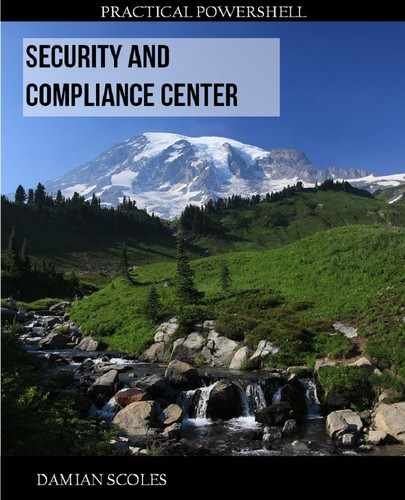FOREWORD
If you are reading a book on a subject as specialized as the use of PowerShell in the Security and Compliance Center (SCC), my assumption would be that you are sufficiently proficient in PowerShell and need no detailed introduction on its history and usefulness. Thus, I will not spend any time trying to “sell” you on PowerShell. In case this isn’t true, the previous books by the author should be able to get you started on the path of becoming a PowerShell guru.
While one might be familiar with PowerShell, getting to use it with a new product can often be challenging. If you’ve had the pleasure of working with the Exchange (or Exchange Online) PowerShell cmdlets, you’ve probably come to appreciate the simplicity, robustness and versatility of a management system fully built on PowerShell from the get-go. Sadly, this doesn’t hold true for many (any?) other Microsoft products. We can debate on the “why”, but the simple truth is that most of the other PowerShell modules and implementations pale in comparison to Exchange’s. And what’s even more frustrating, you might run into consistency issues, as every different team at Microsoft seems to have their own understanding on how best to implement PowerShell support.
This is one of the reasons why a book on PowerShell focused on the SCC might be helpful to you – it can point out all those little differences and annoyances. Another reason is the change in learning practices brought forth by the cloud. While previously we had numerous courses, labs and books to help you get started or master a given product, things in the cloud change so frequently, that often times the effort put in preparing such content is considered unjustified. In turn, a person looking to develop his skills on a given subject is often forced to gain knowledge from raw documentation articles or to scour the web for blogs and code samples. Having a resource that puts it all together in a package such as the current book, and combines it with the insights of a well-versed and field-tested author is becoming the exception. By supporting the book and the author and keeping this “tradition” alive, you are not only helping yourself, but others as well.
But let’s talk some more about the role of PowerShell for the SCC. While the Office 365 Security and Compliance Center has its roots in a modified version of the Exchange Admin Center, and thus inherits some of the PowerShell brilliance that powers the Exchange Admin Console (EAC), there’s a lot missing. Starting with the very limited RBAC controls, the implementation of PowerShell cmdlets for the SCC is lacking on several fronts, which in turn makes the life of any IT Pro working with it a bit harder. This doesn’t mean that you should only focus on the UI though, as many valuable functionalities, such as the content search permissions filters or information barriers are only configurable via PowerShell. On the other hand, as the SCC has grown over the years, features that have no corresponding PowerShell cmdlets have been introduced. Some of those can be managed via Graph API calls, which can easily be adapted for use with PowerShell, but others have no support for the Graph or use some internal APIs and can only be managed via the UI.
In effect, simply knowing which tasks can be performed via PowerShell can save you time, and the book can be used as a quick reference. Its value goes well beyond that though, as it will not just list the different cmdlets, but will explain how they relate to each other and which corresponding UI bits are powered by them. Take for example eDiscovery – just using the Get-ComplianceCase cmdlet will barely give you any useful information. The book however goes to explain the different building blocks and the role they play, along with providing you with numerous examples. The same holds true throughout the different chapters, each giving you clear, concise and tested examples, used to solve real-life issues, as well as sharing best practices.
Of course, PowerShell remains the tool of choice for performing bulk operations, automating simple or complex tasks, and thanks to its extensibility, for integrating solutions across the different Office 365 PowerShell modules and products. You can expect to learn a thing or two on that front too!
Vasil Michev
Microsoft MVP | Office Apps and Services

